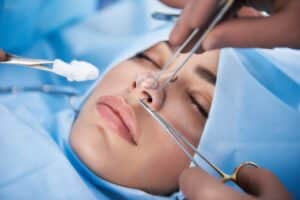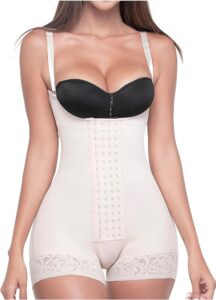What to Expect: A Step-by-Step Guide Through The Ultherapy Procedure
Ultherapy, a non-invasive treatment, harnesses the power of ultrasound to transform and rejuvenate skin by stimulating collagen production. As an FDA-cleared procedure, it offers a surgical alternative for tightening and lifting facial tissue. This cutting-edge technology delivers precise energy to the skin’s foundational layers, promoting natural healing without downtime. With ultherapy’s growing popularity among those seeking age-defying solutions, understanding its benefits and process is essential for informed decision-making.
Understanding Ultherapy and Skin Tightening
Non-Invasive Technique
Ultherapy stands out as a non-surgical solution for skin tightening. Unlike traditional facelifts, it does not require incisions or general anesthesia. This means no scars and no lengthy recovery periods. Patients can return to their everyday activities almost immediately after the procedure.
The treatment uses ultrasound technology to target areas beneath the skin’s surface. It gently heats the deeper layers, which encourages the body to produce more collagen. Collagen is a protein that keeps our skin firm and youthful-looking.
Deep Layer Targeting
With its ability to reach deep beneath the skin, ultherapy stimulates natural collagen production at its source. The ultrasound waves penetrate to depths that creams or other superficial treatments cannot match.
This technique is especially effective in lifting the brow, enhancing jawline definition, tightening sagging neck skin, and smoothing lines on the chest area known as décolletage wrinkles.
Suitable Areas
Ultherapy has specific benefits for various facial regions:
-
Brow: Lifts drooping eyebrows for a more alert appearance.
-
Chin: Defines jawline contours.
-
Neck: Reduces loose neck skin often referred to as “turkey neck.”
-
Chest: Smoothens creases on the chest for a rejuvenated look.
These targeted applications make ultherapy an adaptable option catering to different aging concerns without surgery risks or downtime.
How Ultherapy Works
Energy Delivery
Ultherapy harnesses focused ultrasound energy. This technology targets skin tissue with precision. It does not harm surrounding areas.
The procedure begins by cleaning the targeted area. Then, a device sends ultrasound waves deep into the skin layers. These waves are micro-focused, meaning they concentrate on specific points beneath the surface.
Collagen Stimulation
When tissues heat up, they start to repair themselves naturally. Ultherapy’s goal is to stimulate collagen production in these layers.
Collagen is key for firm, youthful skin. As we age, our bodies produce less of it. That’s where Ultherapy steps in—it triggers your body to make more collagen.
To summarize:
-
The treatment uses focused ultrasound energy.
-
It heats tissues at precise depths.
-
The process encourages natural regeneration.
-
Importantly, it leaves the surface layer untouched.
Overview of the Ultherapy Procedure
Session Duration
Ultherapy is typically a quick and efficient treatment. Most sessions last between 60 to 90 minutes, depending on the area being treated.
Patients can expect a single session to cover their needs. This makes it convenient for those with busy schedules. There’s no need for multiple visits.
Practitioner Expertise
A licensed practitioner carries out the procedure using specialized equipment. These professionals are trained in ultrasound therapy.
They ensure that focused ultrasound energy targets only the necessary areas. Safety and effectiveness are their top priorities during treatment.
Non-Invasive Nature
One of Ultherapy’s key benefits is its non-invasive nature. Unlike surgical facelifts, this procedure requires no incisions or anesthesia.
Patients experience minimal discomfort and there is no downtime required post-treatment.
Benefits of Undergoing Ultherapy
Natural Lift
Ultherapy provides a gradual improvement in skin tightness. Unlike surgical facelifts, it doesn’t drastically change your appearance overnight. Instead, the treatment stimulates collagen production over time. This leads to a more youthful look that unfolds naturally.
Patients often see their skin become firmer and more lifted in the months following treatment. The process is akin to turning back the clock on aging skin without any artificial enhancements.
No Downtime
One of Ultherapy’s key advantages is its non-invasive nature. You don’t have to take time off work or pause daily activities after receiving Ultherapy. There’s no recovery period necessary.
This contrasts with surgical options which can require weeks for full recovery. With Ultherapy, you can immediately return to your routine while your skin begins its rejuvenation process.
Preventative Measure
Younger patients are taking advantage of Ultherapy as well. It serves as a preventative tool, delaying signs of aging before they start showing prominently.
Potential Risks and Side Effects
Common Reactions
After highlighting the benefits of ultherapy, it’s crucial to address possible side effects. Most individuals experience mild issues that fade quickly.
Temporary redness, slight swelling, or a tingling feeling are common after treatment. These reactions are typically short-lived. They show your body is responding to the heat and healing.
You can usually return to normal activities soon after. The discomfort should not stop you from daily tasks.
Uncommon Issues
While less frequent, some people might face more concerning side effects.
A few cases report bruising in treated areas, or even numbness. But these instances are rare.
Allergic reactions due to ultrasound gel may happen but they’re unusual. If you have sensitive skin, discuss options with your provider beforehand.
Remember: always consult professionals before deciding on treatments like ultherapy for your cheeks or other areas.

Recovery Process and Longevity of Results
Immediate Resumption
After an Ultherapy session, patients can return to their daily routine. There is no required downtime.
Patients appreciate the absence of a recovery period. They go back to work or other activities right away. This convenience makes Ultherapy popular among those with busy schedules.
Collagen Rebuilding
The full results from Ultherapy emerge over time as the body’s collagen production increases.
In the weeks following treatment, gradual improvements become noticeable. The peak effect occurs within 2 to 3 months as collagen rebuilds under the skin’s surface. Skin appears firmer and more youthful as a result.
Lasting Effects
Results from Ultherapy can sustain for years with proper care.
Most people enjoy benefits for up to two years. Maintaining these effects involves good skincare habits and sun protection.
To extend longevity, some opt for follow-up sessions after initial improvements wear off. Staying consistent with skincare routines helps preserve results longer.
Comparison with Other Skin Tightening Procedures
Depth Control
Ultherapy offers greater depth control than other non-invasive treatments like Thermage. This is due to its use of ultrasound imaging, which allows practitioners to see the layers of tissue they are treating. As a result, Ultherapy can target specific areas beneath the skin’s surface more accurately.
Unlike radiofrequency treatments that provide heating at various depths, Ultherapy reaches deeper into the skin’s layer. Here lies the key difference: it stimulates collagen production at just the right depth for optimal tightening and lifting effects.
Longevity Results
When considering longevity, Ultherapy often outperforms laser treatments. Laser procedures may require frequent sessions as their results tend not to last as long. In contrast, Ultherapy stimulates new collagen growth over time which contributes to longer-lasting improvements in skin laxity and appearance.
The creation of new collagen means that post-treatment improvements continue for months after an Ultherapy session. For many patients, this translates into fewer visits to a dermatology or skin surgery center, making it a cost-effective option in the long run.
Invasiveness Level
Compared to surgical options like facelifts, Ultherapy is much less invasive. Surgical facelifts involve incisions and extended recovery periods but offer significant changes in appearance by addressing severe sagging and deep wrinkles directly through manipulation of facial tissues.
However, those seeking milder improvement with minimal downtime find comfort in knowing that Ultherapy doesn’t require going under the knife at all while still improving elasticity and reducing fine lines effectively.
-
Pros:
-
No incisions required.
-
Lower risk compared to surgery.
-
Cons:
-
Less dramatic results than a surgical facelift.
Patient Testimonials and Global Trust
Satisfaction Rates
Patients who choose Ultherapy often report high satisfaction with the results. This non-surgical procedure provides a lifting effect that many find gratifying. Unlike other skin tightening treatments, Ultherapy does not require incisions or significant recovery time.
The experience of an Ultherapy session varies from person to person. However, most patients note a visible improvement in their face and chin areas. These changes can occur gradually over time as the body naturally produces collagen.
Celebrity Endorsements
Celebrities and influencers have publicly endorsed Ultherapy, adding to its credibility. Their experiences help others understand what to expect from the treatment. When famous individuals share their positive outcomes, it boosts confidence among potential patients.
Providers of Ultherapy often showcase these endorsements in their offices or during consultations. They serve as powerful testimonials for those considering this method of facial rejuvenation.
Safety Record
Ultherapy is clinically proven and has a strong safety record across diverse demographics. Specialists with proper training perform the procedure ensuring patient welfare at all times.
Physicians emphasize that while anyone can be a candidate for Ultherapy, an initial consultation is crucial to determine suitability. During this meeting, practitioners discuss expectations based on factual evidence rather than mere claims.
Closing Thoughts
Ultherapy emerges as a compelling option for those seeking non-invasive skin tightening and rejuvenation. The procedure’s use of ultrasound technology not only offers a scientific approach to cosmetic enhancement but also provides a safety profile that resonates with patients globally. As we have explored, the benefits of Ultherapy extend from its minimal downtime to its natural-looking results, distinguishing it from other skin tightening methods. While potential risks exist, they are typically mild and transient, reinforcing Ultherapy’s position as a viable alternative for individuals hesitant about surgical interventions.
The decision to pursue Ultherapy should be informed by a thorough understanding of the procedure, its outcomes, and how it aligns with personal aesthetic goals. Prospective patients are encouraged to consult with qualified medical professionals to discuss their suitability for Ultherapy and to ensure an experience that is both safe and satisfying. For more information or to schedule a consultation, reach out to your local certified Ultherapy provider today.
Frequently Asked Questions
What is Ultherapy?
Ultherapy is a non-invasive cosmetic procedure that uses focused ultrasound energy to stimulate collagen production and tighten skin.
How does Ultherapy work?
Ultherapy works by delivering targeted ultrasound energy to the skin’s foundational layer, encouraging collagen regeneration without cutting or disrupting the surface.
What can I expect during an Ultherapy procedure?
Expect a mild sensation of heat as the ultrasound energy is applied. The procedure typically lasts 30-90 minutes, depending on the treatment area.
What are some benefits of Ultherapy?
Benefits include firmer skin, reduced wrinkles, no downtime required post-treatment, and natural-looking results as your body produces new collagen.
Are there any risks associated with Ultherapy?
Risks may include temporary redness, swelling, tenderness or tingling. These side effects are usually short-lived and mild in nature.
How long do Ultherapy results last?
Results can last up to a year or longer but vary based on individual aging processes and lifestyle factors. Maintenance treatments can prolong effects.
How does Ultherapy compare to other skin tightening procedures?
Unlike lasers or surgery, Ultherapy targets deeper layers of tissue for natural collagen production without downtime. Results develop gradually compared to more immediate changes from invasive procedures.










